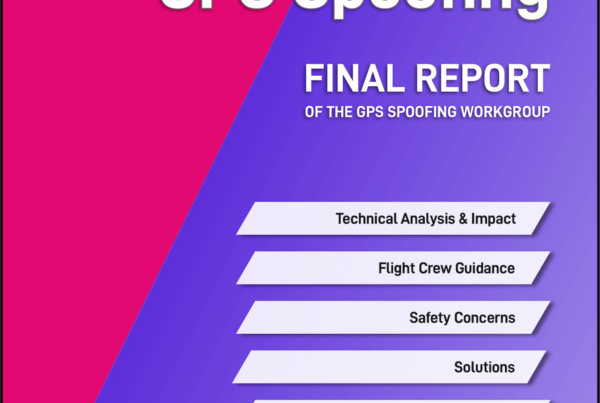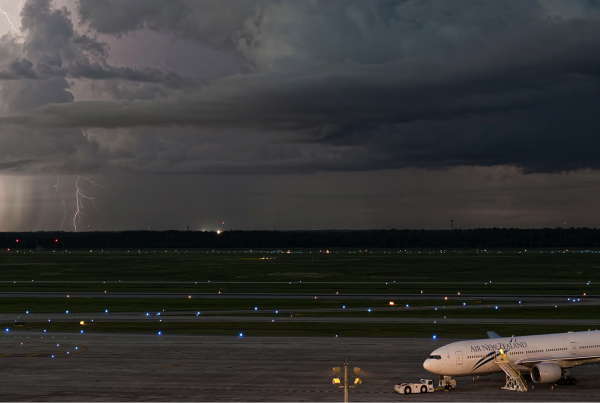Questions and Answers
The Questions ….
1. Is RVSM Height Monitoring required in the USA?
The United States adopted the requirement for height monitoring in response to ICAO implementing a standard that periodic monitoring was required as specified in Amendment 29 to Annex 6 Part II.
2. I have been asked a question about an airways routing plan out of Israel to Middle East and Africa destinations that are referred to as Red Sea Routes. Have you heard of this?
Saudi “V Routes” are for domestic Saudi operators with government approval Saudi “Uncoordinated flights” (read no slots) can fly over the Red Sea at FL250 Southbound/FL260Northbound Saudi Arabia AIP Enroute 1.1-3 Para: 1.1. 4.2. 4
3. Where can I find information about designated HAJJ routes to/from Saudi Arabia?
Special HAJJ routes to/from Africa region airports into Jeddah FIR are published in theDakar AIP Supplement NR 22/a11GO dated 28JUL 11 www.ais-asecna.org
4. What is the requirement for international operations on a crewmember to hold a valid radiotelephone license?
International only.FCC Form 605 Radio Station License Pilots Restricted Station License: http://wireless.fcc.gov/uls and
http://wireless.fcc.gov/commoperators/rp.html
5. Is it legal for me to use my FAA temporary pilot certificate internationally?
Usually a temporary is not accepted,it will depend on the country’s AIP.
6. Is there a maximum age limit for pilots flying internationally?
There is no “Age 60” problem with Part 91/GA operations. The requirement comes in with Commercial operations, (Part 135 or 121). ICAO requires one pilot at the controls to be below 60 if the PIC is over 60. The issue is further confused by the fact that the FAA has applied this to Part 121 carriers only. ICAO countries apply this rule to any commercial operation (Part 135 included). An individual state (country) has the right to set their own rules apart from the ICAO or FAA. The AIP for the country in question would have this information.
7. Is it legal for a Crewmember to have two passports for the USA?
Yes, the US Government allows a US national to have a Second Passport Book (limited validity up to 2 years) for one of 2 reasons. 1. Frequent international travel that requires one to have visas etc. and the conflicting dates/times for the travel to these countries 2. For your personal security when traveling in the Middle East with regards to Israel and the countries that will not allow you to either obtain visas or enter if you have a visa if there is immigration stamp from Israel.
8. I have a conviction in the USA of Driving while intoxicated. Is this a problem in international operations?
This Canadian immigration policy prohibits entry of any person (not just flight crews) who have a 10-year old or less misdemeanor conviction, or any class DUI conviction. The decision to grant or deny the petition for waiver is totally discretionary with the Canadian immigration officials. Review the Canadian immigration web site is a good one. The url is http://www.cic.gc.ca/english/visit/index.asp. If you have any questions about how they enforce this policy, call their Call Centre at 888.242.2100.
9. Do I need an “English Language” endorsement?
Effective 5 March 2008, ICAO Annex 1 (Personnel Licensing) standards required all pilots operating internationally to have an airman certificate with endorsement of English language proficiency (ELP).While many States (countries) complied with the ICAO implementation date, ICAO allowed delays up to three years for countries notifying the organization of intended delays.
10. When checking in with ATC, whether being a new country or simply a new sector in the same country, they seem to want to confirm my routing each and every time. Am I doing this wrong?
There are no specific references as to why this is being done. PANS-ATM, Doc#4444, Paragraph 4.5.7.2. states that the route of flight may be detailed “as necessary” in each clearance. Perhaps the controller’s are using this for verification of your routing and altitude.
11. How does the US Customs define a “Commercial” aircraft?
“Commercial Aircraft” are defined by U.S. Customs regulations as aircraft “transporting passengers and/or cargo for some payment or other consideration, including money or services rendered.” 19 CFR 122.1(d). A “Commercial Aircraft” also includes any aircraft which is not carrying passengers and/or cargo at the time of its inbound CBP clearance, but which, nonetheless, left the U.S. with passengers and/or cargo transported to a foreign area for “commercial purposes.” The rule is not a FAR. The rule is for CBP. CBP do code FAA regulations – 91, 135, 121.
More on the topic:
- More: Mexico Customs Surprises: Pills, Vapes, and Laptop Rules
- More: Greenland NAT Alternates: Dec 2025 Update
- More: Crossing the Quiet South: From Australia to Argentina
- More: Major runway shutdowns ahead at KVNY/Van Nuys
- More: New FAA Airspace Warnings for Venezuela and Puerto Rico
More reading:
- Latest: Mexico Customs Surprises: Pills, Vapes, and Laptop Rules
- Latest: Greenland NAT Alternates: Dec 2025 Update
- Latest: Crossing the Quiet South: From Australia to Argentina
- Safe Airspace: Risk Database
- Weekly Ops Bulletin: Subscribe
- Membership plans: Why join OPSGROUP?











 Get the famous weekly
Get the famous weekly 




